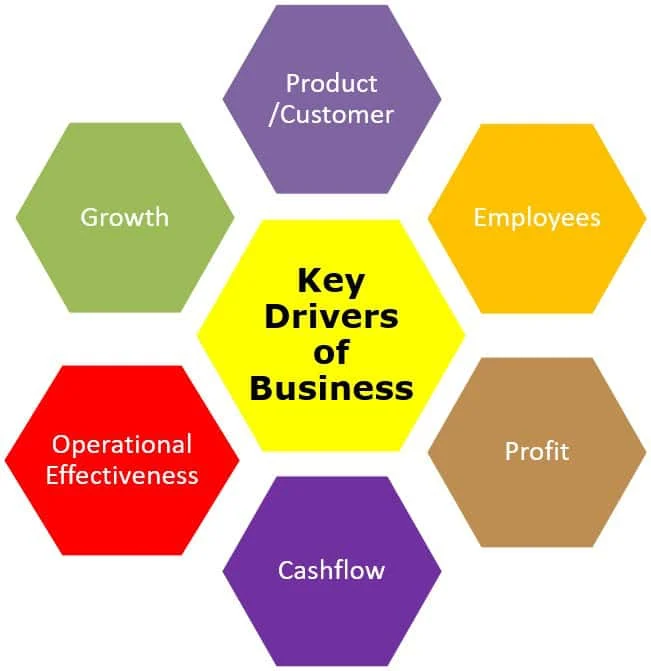Article Contents:
Developing Business Acumen
Running a small business involves more than just managing daily operations; it requires ownership of every aspect of the business—products, people, profits, and processes—while guiding it toward sustainable growth.
However, many small business owners become absorbed in immediate challenges and overlook the opportunity to develop the skills necessary for making informed, strategic decisions. This is where business acumen becomes crucial.
Thinking like a CEO means rising above the operational grind and adopting a broader perspective on business management. It involves understanding how different parts of your business interconnect, using data to inform decisions, and focusing on long-term goals rather than merely addressing short-term issues.
In this article, I will share my insights on how small business owners can develop business acumen and make the right decisions to foster profitable growth.
What is meant by Business Acumen?
Developing business acumen involves the following processes:
- **Understanding your business as a whole**:
Recognizing how decisions in one area—such as pricing or hiring—impact other areas like cash flow or profitability.
- **Interpreting critical data**:
Using numbers to uncover insights, identify trends, and guide strategic decisions.
- **Balancing strategy with execution**:
Ensure that daily actions align with the larger vision and that short-term goals contribute to long-term success.
For small business owners, it’s not necessary to become an expert in every aspect of the business.
Instead, knowing enough to ask the right questions, track meaningful metrics, and make confident decisions is important.
Why developing business acumen is important for small business head?
In today’s competitive and unpredictable world, the following factors are essential for business success:
- – **Success demands clarity:** Without a clear understanding of your business’s key drivers, you risk making decisions that could cost you time, money, and opportunities.
- – **Profitability requires control:** Knowing where to focus your efforts and which metrics to track helps you avoid financial pitfalls and maximize returns.
- – **Growth thrives on foresight:** Anticipating challenges and preparing for opportunities ensures that your business remains resilient and adaptable.
Developing business acumen enables you to connect the dots, make informed decisions, and to lead confidently.
Now, let’s explore the key business drivers and their interconnectedness for sustainable and profitable growth.
Key Drivers of Business
To think like a CEO, small business owners must master the six key drivers of success:
1)Product/services & Customer
2)Employees
3)Profitability
4)Cash flow
5)Operational effectiveness
6) Growth.
Each driver requires specific focus and awareness of relevant data.
Let us discuss each driver and its importance for business success.

Product /service & Customer:
Key aspects need to be answered :
Who is your ideal customer/segment?Whether B2B or B2C;
Are your products/ services really solving customer’s problem?
What are new products /service required to fulfil the customer’s requirement?
How is your product /service standout in customer’s mind?
How is your service quality and relationship quality with your customer?
Data to be tracked:
Productwise / customerwise sales performance and trend
Customer satisfaction score / product complaints
Customer feedback
Lost order data
Why it matters?
Your products and services are the backbone of your business. Understanding your customers’ perceptions and feedback is important for effectively assessing your performance.
By recognizing their value and how well you are performing, you can ensure that you meet customer needs while also driving profitability.
Employees:
Key aspects need to be answered :
Do you have a manpower planning process?
How do you attract talent to your organization?
How do we retain the employees and plan for employee engagement?
What kind of conducive environment have you created for better communication and engagement with people towards performance?
Data to be tracked:
Manpower headcount functionwise and skillwise
Manpower cost and trend in line with sales
Attrition rate/absenteeism trend
Performance tracking of each employee
Why it matters?
Your employees are the engine of your business. A motivated, skilled, and aligned team amplifies your ability to execute strategies effectively.
Profitability:
Key aspects need to be answered :
Do you know your profitability trend?
Which product mix /customer brings high profitability?
Do you know your business breakeven points?
Do you control expenses and inculcate a culture of cost consciousness?
Is your pricing competitive in the market?
Data to be tracked:
Profitability and loss statement and key points to control
Fixed and variable cost structure of the business
Productwise contribution margin and trend
Potential cost optimization projects and status
Why it matters?
Profitability is essential for sustainability. Understanding profit drivers enables you to prioritize the most impactful activities.
Cash Flow:
Key aspects need to be answered :
Do you know your business cash flow cycle time?
What are your working capital requirements for each period of the business cycle?
Do you have sufficient emergency funds to ensure business continuity?
Do your customers pay on time, and you pay on time to your vendors?
Data to be tracked:
Payables and Receivables data with different outstanding periods
Cash flow statements
Liquidity ratios of your business
Why it matters?
Even a profitable business can fail due to mismanaged cash flow. Maintaining healthy cash flow is essential for operational continuity and growth.
Operational effectiveness:
Key aspects need to be answered :
Is workflow optimized? Do you know the constraint process and the method of debottlenecking?
Is the process established to ensure quality in each process, both manufacturing and business process?
Are robust supply chain practices established, such as vendor selection, the right pricing and delivery terms, partnership arrangements, and support for NPD from vendors?
Are you driving continuous lead time reduction and delivery flexibility in the organization?
Data to be tracked:
OEE metrics of all or critical processes
Inventory trend at RM +WIP+FG
Quality issues/rejections/complaints/cost of poor quality
Capacity of each process and capex requirement for capacity addition
Leadtime of existing and NPD.
Key supplier’s performance metrics
Why it matters?
Improving operational excellence and delivery flexibility boosts productivity and customer satisfaction while lowering costs, resulting in a competitive advantage.
Growth:
Key aspects need to be answered :
Are you exploring new segments or geographies?
Are you introducing new products or improving existing ones?
Are you leveraging collaborations to scale?
How robust is your customer acquisition process?
Data to be tracked:
Revenue growth rate each year product-wise and customer wise
List of potential customers/ Leads
Cost of acquiring a new customer and retention cost
Why it matters?
Growth drives momentum and secures the long-term viability of your business. Sustainable growth necessitates careful planning and execution.
How can you develop business acumen?
Here’s how small business owners can enhance their business acumen
- **Understand the Numbers & metrics**
– Learn to read financial statements, including Profit & Loss (P&L), cash flow statements, and balance sheets.
– Track key metrics across all six drivers of business success.
- **Invest in Learning**
– Attend workshops, webinars, or courses for small business owners.
– Read case studies, business books, and industry reports to broaden your knowledge.
- **Seek Mentorship**
– Collaborate with experienced mentors or coaches who can provide valuable insights and guidance.
– Join peer groups or networks to learn from the experiences of other small business owners.
- **Cultivate a Data-Driven Culture**
– Utilize tools and dashboards to collect and analyze data effectively.
– Make decisions based on facts and figures rather than intuition alone.
- **Experiment and Reflect**
– Test new ideas on a small scale before full implementation.
– Regularly review outcomes and learn from both successes and failures.
Summary & Call to Action :
Take the first step today:
- Reflect on the six drivers of your business. Which area do you feel is your weakest link?
- Analyze the data for that area and identify one improvement you can make this week.
- Commit to ongoing learning through attending a workshop, reading a book, or engaging with a mentor.
Developing business acumen doesn’t happen overnight.
It’s a continuous process of understanding, analyzing, and adapting.
By adopting a CEO mindset, you empower yourself to lead with clarity, confidence, and purpose, ensuring the long-term success of your business.



